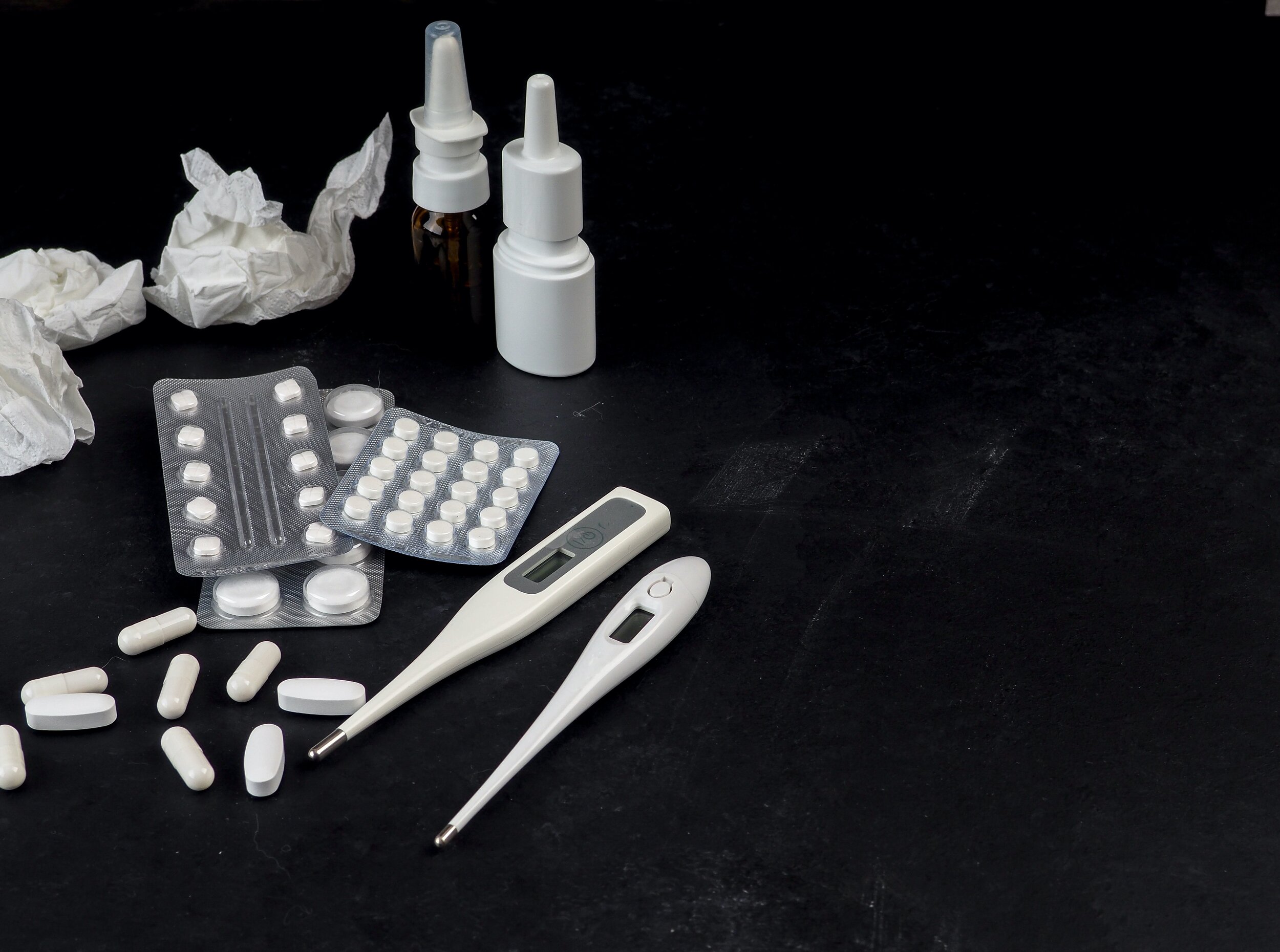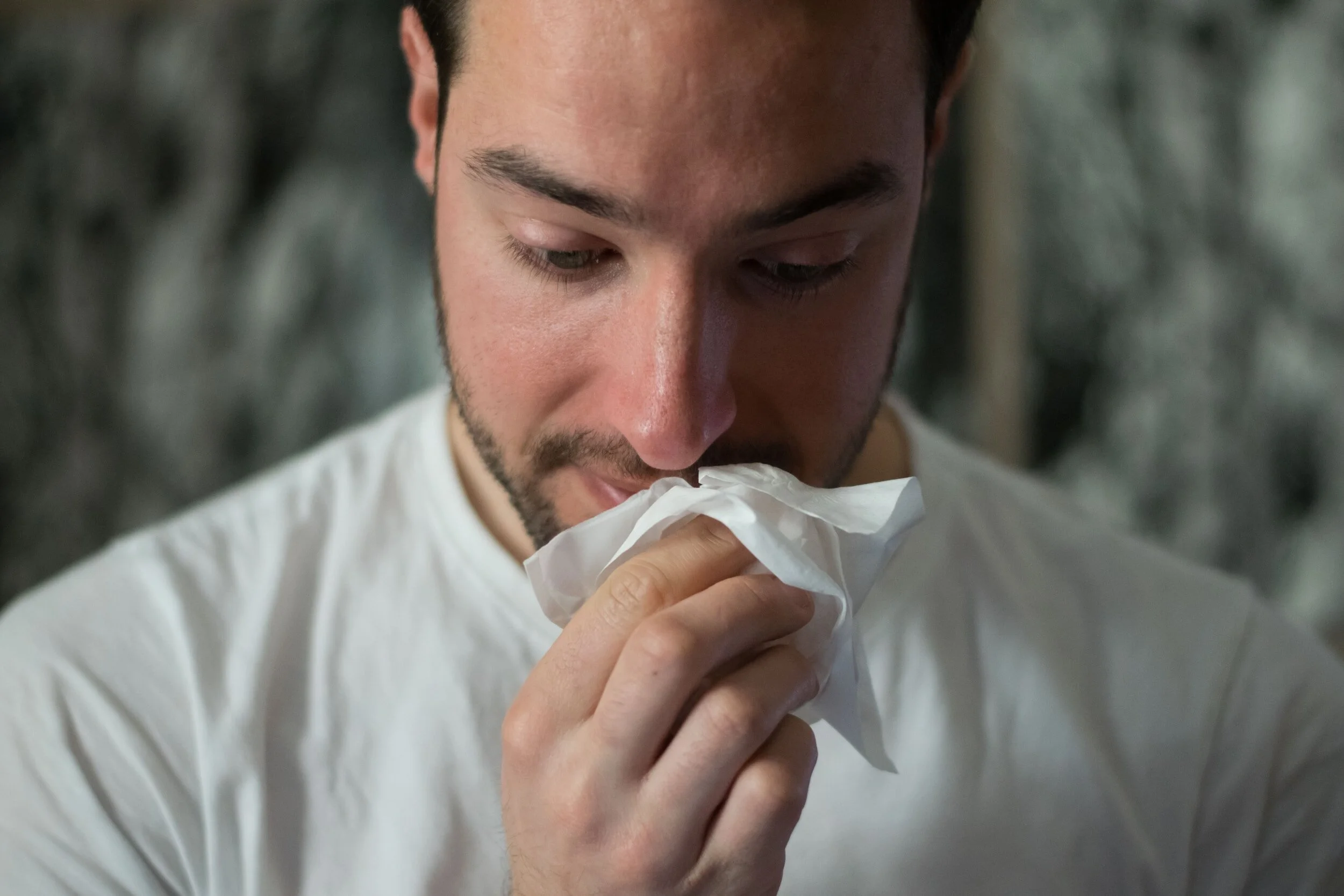
Types of Allergies
New York allergy sufferers know firsthand the discomfort and health risks associated with the symptoms of an allergic reaction. But what causes allergy symptoms?
What are Allergies?
Allergies are a hypersensitivity of the immune system. The disorder may cause asthma, sinus issues as well as allergic reactions to normally harmless environmental substances known as allergens. These allergic reactions are acquired and predictable. The reaction is often quite rapid.
While there are common seasonal allergies like hay fever, individuals can also suffer from food, environmental and animal allergies. In the New York City area allergies, asthma and sinus issues can be exacerbated by space restrictions, air quality, weather, and occupational environments resulting in exposure to higher concentrations of allergens. Learning more about allergens, their effect, how to avoid them, and how to treat allergic reactions, asthma, and sinus issues can be vital to improve the quality of life for any NYC resident suffering from allergies.
Allergies are characterized by the excessive activation of mast cells, a type of white blood cell, and basophils. The cells have an extreme inflammatory response to the antibody known as Immunoglobulin E (IgE). A few common allergic reactions include trouble breathing, coughing, sneezing, eczema, hives, and hay fever.
Mild allergies like hay fever are prevalent and cause symptoms like allergic conjunctivitis, itchiness, and runny nose. Some people experience severe allergies to environmental, dietary, or medicinal allergens that can lead to anaphylactic reactions.
Diagnosing Allergies
Before moving on to testing to confirm allergic disease other causes for symptoms should be investigated. Vasomotor rhinitis, for example, often presents with the same symptoms as allergic rhinitis but the symptoms are caused by a physical obstruction or deformity and not an allergic reaction. Once other causes are eliminated and a diagnosis of asthma, rhinitis, anaphylaxis or other allergic disease is made there are tests that can be done to determine the specific causative agent. Specifically there are skin tests and blood tests to be performed by an Allergist.
The skin tests are often known as prick or puncture testing. An area on the forearm or back is selected and marked with a pen or dye that itself won’t cause an allergic response. Then small amounts of the suspected allergens or extracts of the allergens are introduced to these areas and a puncture or prick is made in the skin. Sometimes the allergens are injected directly into the skin. After 30 minutes the body’s reactions to the allergens is observed and a determination is made on which allergen is causing the patient’s symptoms and the severity of their allergy. Skin tests are not as effective for those who have skin disease or have recently taken antihistamines.
Blood testing involves the measurement of IgE levels in a sample of the patient’s blood. Using radiometric, colormetric, and fluorometric tests to determine simply whether or not a patient is allergic to a particular allergen. The tests don’t determine severity of the reaction just if there is an allergic reaction or not. Blood tests have been shown to have approximately a 70% positive predictive value in large studies.
Allergic Rhinitis
Allergic rhinitis is an inflammatory response of the nasal passages to pollens that happens through an IgE mechanism. Visually, IgE molecules are like two telephone poles strung on a mast cell. These molecules release chemicals – including histamine, bradykinins and leukotrienes – when they connect to a pollen particle, which causes allergic symptoms. Symptoms can include nasal stuffiness, runny nose, sneezing, itching, and breathing difficulty. Pollens are a common cause of nasal allergies but pet dander may also cause similar symptoms. Determining the allergen that is causing a patient’s symptoms is a key step as it will help to determine the timing of medication and strategies for avoiding allergens.
In the spring in the northeast tree pollens usually arrive in March and last until mid-May. Grass pollens are most prominent from mid-May until mid-July; and ragweed pollen, in September. Mold pollen occurs throughout the year. Pollens tend to pollinate between the hours of 6 a.m. and 10 a.m. Dust mites also occur throughout the year when humidity exceeds forty percent. Avoiding exposure during these months and hours of the day can help reduce symptoms. Any medication will be directed towards those times.
Prolonged exposure to indoor pets such as cats or dogs can lead to symptoms that last all year round. Pets usually leave excessive dander in the bedroom. Patients sleep in the bedroom for eight hours a night and are exposed to pet dander at one hundred times the amount of exposure to pollens, which may only last for six weeks. Also, New York City apartments tend to be one-third the size of homes in the rest of the United States, giving dander less places to hide. This makes avoidance with pet allergies particularly difficult and may require those with severe allergies to live pet free. Those with less severe allergies should look into vacuum cleaners with HEPA filters to help reduce build up of pet dander and keep their air clear.
Environmental controls can be done to decrease the pet and dust mite exposure. Use of dust mite covers on the bedding, and taking the carpet up in the bedroom, can decrease the presence of dust mites. Dust mite covers must be washed above 140 degrees to be effective. Use of Allerpet and air filters can significantly decrease pet dander in the bedroom. However, an air filter is ineffective against dust mites, as they are larger than cat dander and usually settle on surfaces, without staying airborne long enough to be filtered by a machine.
Air conditioning is the best treatment for filtering early morning pollination. Complications of nasal allergies can include acute or chronic sinusitis, acute sinusitis, asthma rhinitis, and bronchial asthma. These diseases are indications for immunotherapy which can prevent the development of these conditions.
Food Allergies
Food allergies are an adverse immune response to food protein. Some protein fragments are resistant to digestion and when they are not broken down by the digestive process they are tagged by IgE. This causes the immune system to identify the protein as harmful. The immune system considers the body under attack and an allergic reaction is triggered.
Food allergy reaction can be mild or severe. They can include dermatitis, gastrointestinal distress, and respiratory distress, which can be life threatening in severe cases. Anaphylaxic responses such as biphasic anaphylaxis and vasodilation are severe allergic reactions that require immediate intervention.
Food allergies are typically treated with avoidance and some medications that are designed to minimize the protein allergy reaction. Immunotheraphy involving desensitization is also a method used. The allergy sufferer is exposed to the protein in small increasing doses with the ultimate goal of the immune system becoming desensitized to the protein. Those with extreme food allergies often carry injectable epinephrine in the form of an EpiPen or other delivery device. These emergency devices are used to counteract severe reactions after accidental exposure.
Drug Allergies
Drug allergies can involve many different compounds and types of reactions, but the two most common culprits are penicillin and sulfur drugs. Penicillin is the most common form of drug allergy over the last 65 years. The major antigen is the six carbon benzene ring that people react to. Patients usually develop a maculopapular rash, a diffuse red rash on the body or centripetal rash, which spreads out to the legs and arms.
Currently, there is no adequate test for penicillin allergy. One needs to test with both penicilloyl-polylysine or PPL to test the major determinants, and an MDM (minor determinant mixture) to check for fatal reactions. As the penicillin passes through the liver it is hydroxylated, sulfated and combines with albumin to produce different chemical compounds. The fatal reaction usually happens to the MDM. If necessary, one must do a graded penicillin challenge if the patient has a history of reacting to penicillin. However there has never been a fatal reaction to penicillin taken orally.
Sulfur is the second most common drug allergy in general medicine. Sulfur is present in water pills, celecoxib, Bactrim and Azulfidine anti-arthritic drugs. Because the liver is often a slow hydrolyzer, some patients digest sulfur slowly, resulting in the body being exposed to the chemical for longer periods of time. The most common manifestation of an IgE allergy to sulfur is a maculopapular rash. The patient can develop Stevens-Johnson Syndrome, or ulcers to mucosal surfaces such as the vagina, anus or mouth. This type of lesion can become a toxic epidermal necrolysis or a virtual burn. Patients can be desensitized to IgE sulfur reactions, but not Stevens-Johnson Syndrome. Sulfur drugs can also absorb sunlight and cause a photosensitive reaction on the sun exposed surfaces. These typically appear on the face, and the tops of the hands and feet.
Most drugs – even if they don’t cause IgE reactions – can be inured against when the need for a life saving therapy outweighs the patient’s history of an allergic reaction. A patient can be administered one hundredth to one thousandth of the dose, which is then doubled every half hour until the patient gets a therapeutic amount. A rush desensitization can be can be done in one day, and a slow one can be broken down to take one month.
Allergic Typologies
Environmental Allergies
Contact Dr. Lubitz Today and Arrange a Consultation
If your asthma or allergies are getting you down, don’t suffer needlessly. Same-day appointments are available.



